You can trust Cyclingnews
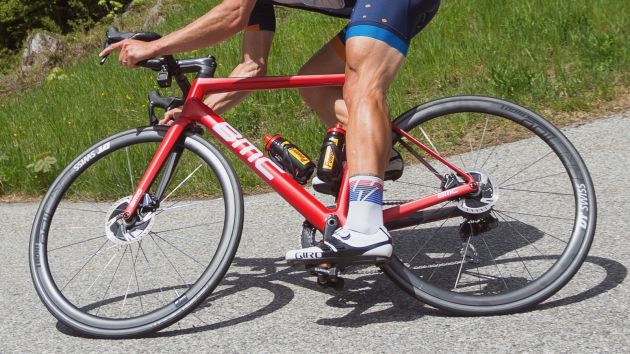
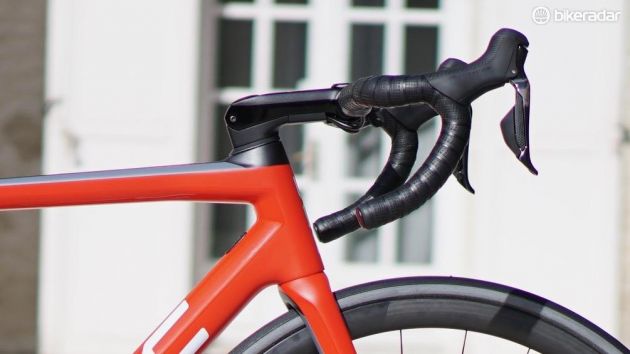
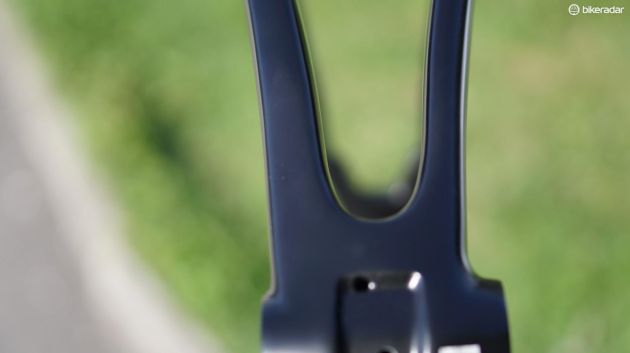
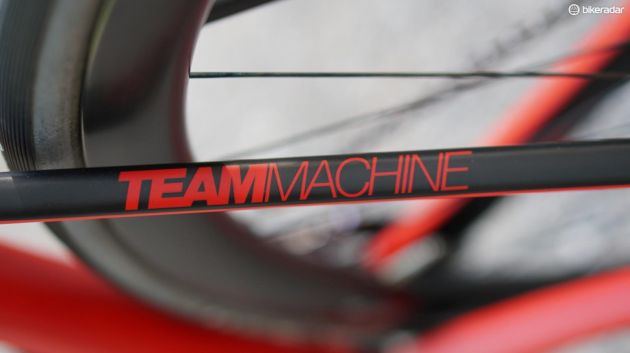
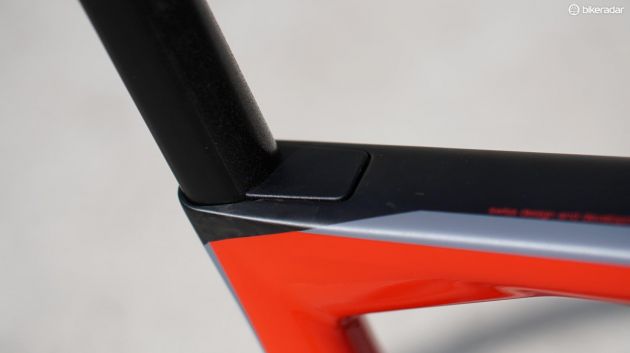
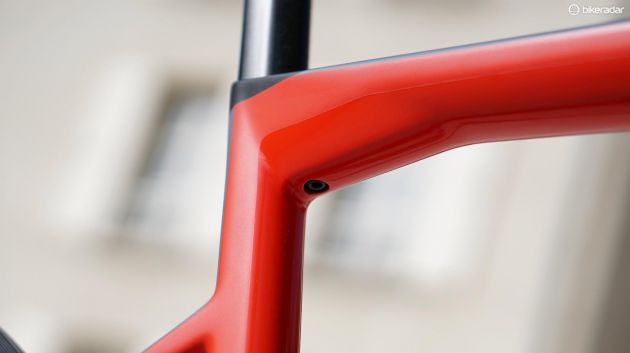
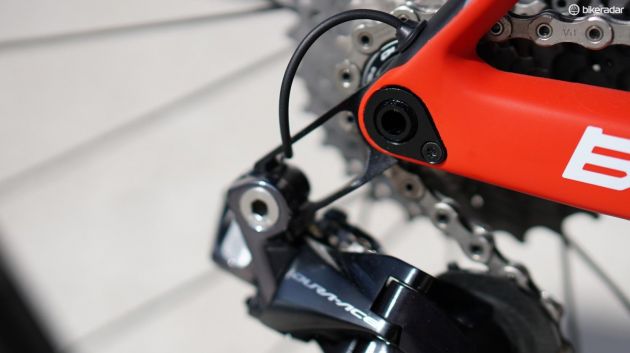
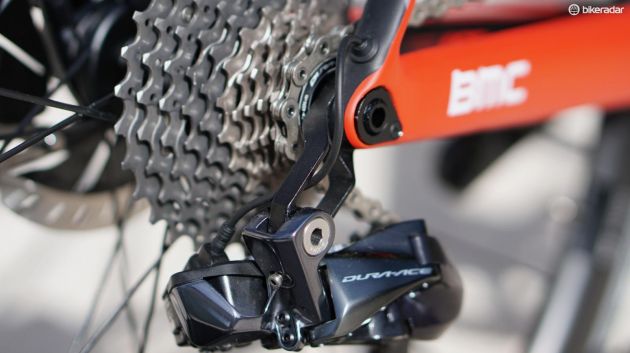
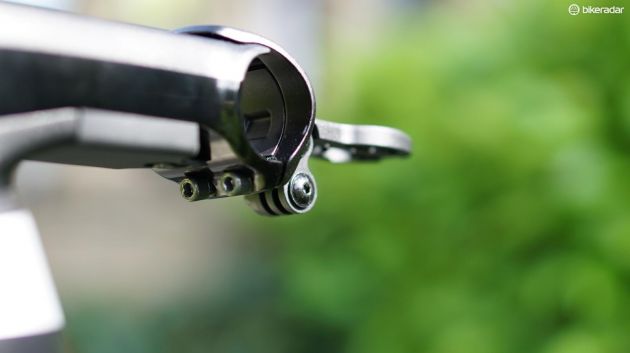
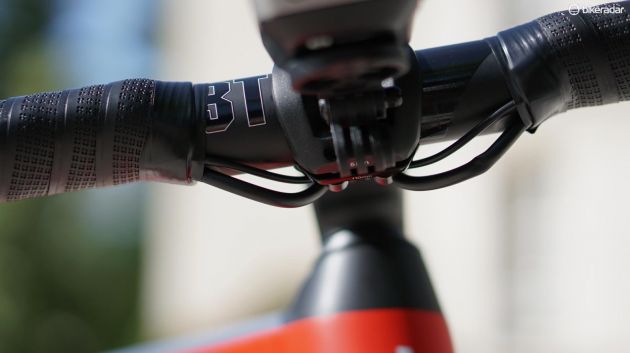
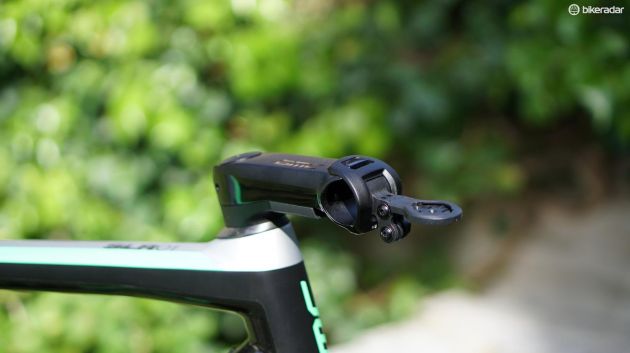
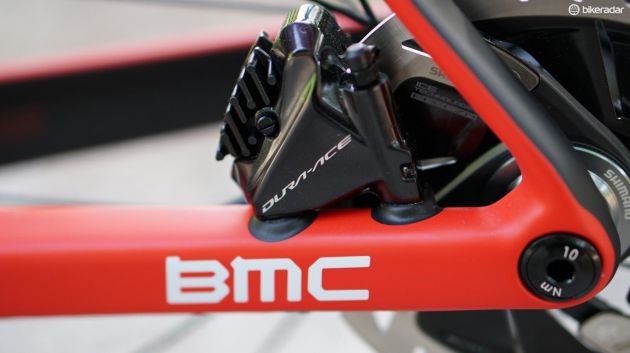
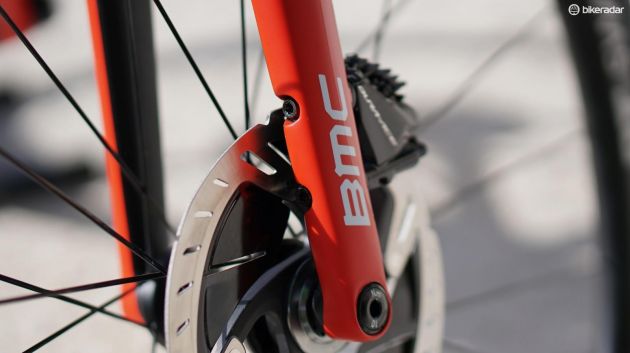
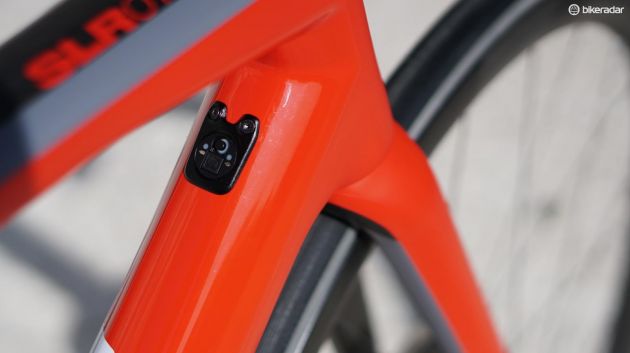
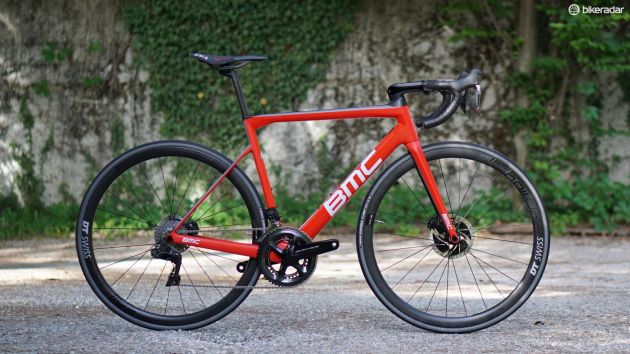
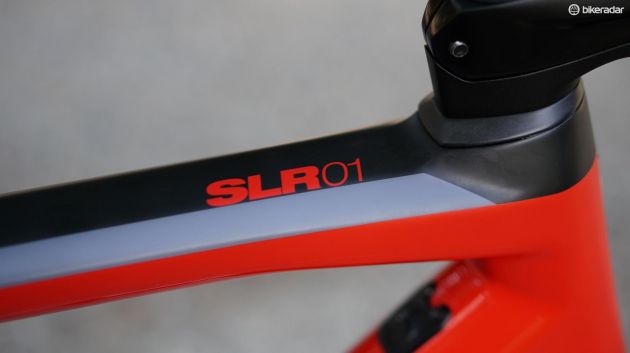
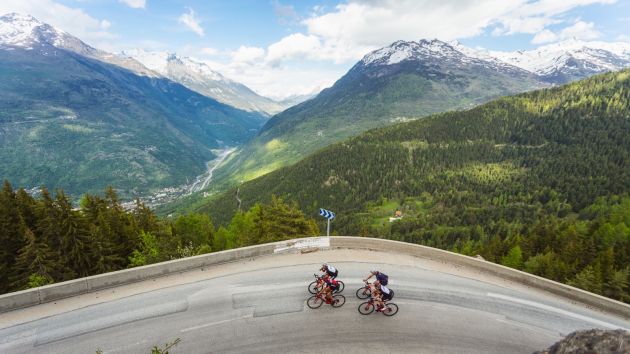
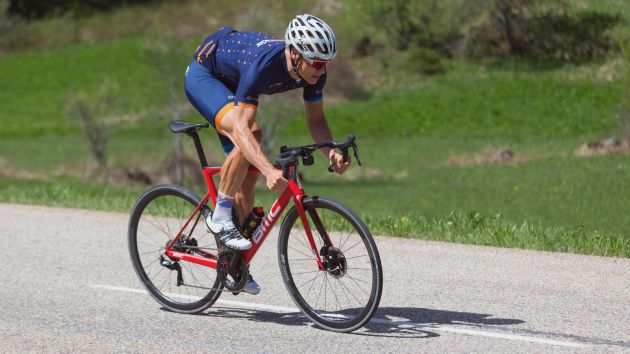
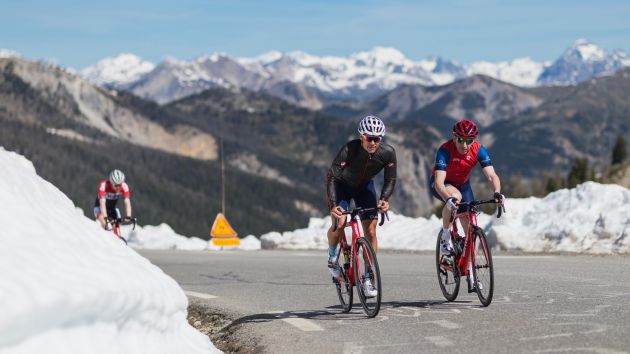
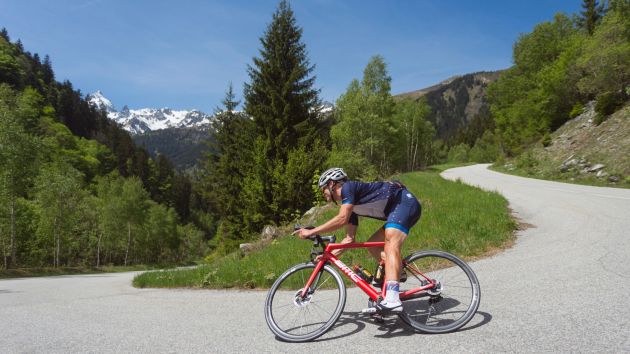
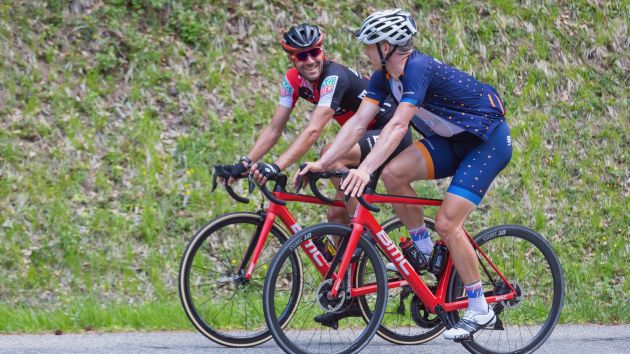
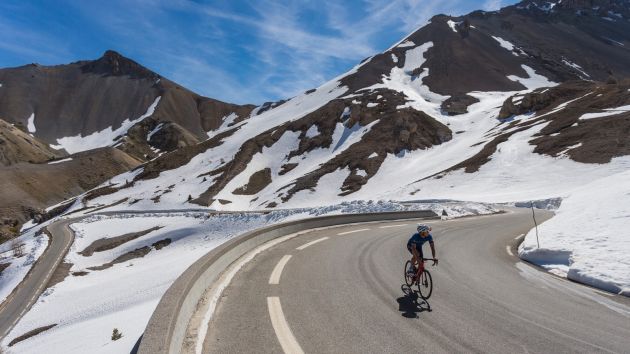
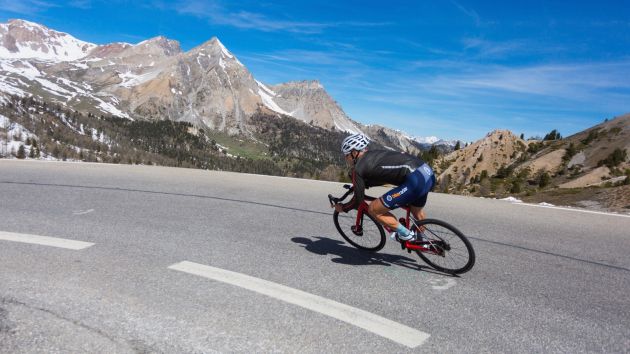
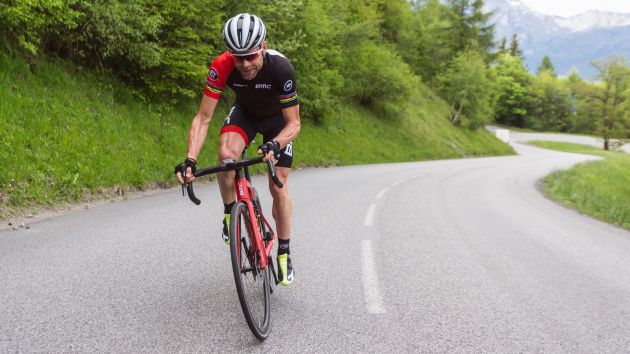
This article originally appeared on BikeRadar
After winning the Tour de France, the Olympics and the world championships with the Teammachine SLR01, what was left for BMC to do? Well, add disc brakes to it, of course.
The latest incarnation, dressed in hydraulic braking and digital shifting with Shimano's new Dura-Ace 9170 Di2 group, largely continues the Swiss frameset's tradition of sharp handling, high pedaling-platform stiffness and engineered comfort.
My author bio (below) has for some time listed my dream bike as a "BMC Teammachine with disc brakes and clearance for 30mm tires". I rode the SLR01 Disc over three days in the French Alps — with 25mm Vittoria Corsa clinchers — and came away with my dream largely intact.
BMC Teammachine SLR01 Disc Team highlights
- Same race geometry as Teammachine SLR01
- 815g frame (size 54cm)
- Fully internal routing
- Di2 box built into down tube
- Full Shimano Dura-Ace 9170 Di2 group; 52/36 and 11-30
- Construction design created by supercomputer calculations
- Improved bottom bracket stiffness and vertical compliance, but stiffer fork than current SLR01
- Proprietary Di2 derailleur hanger and thru axles
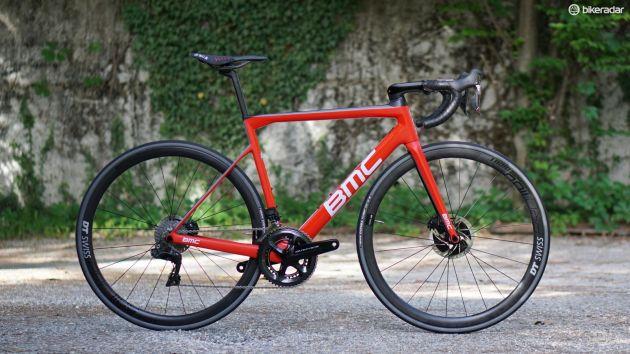
A complete 56cm weighed 6.92kg / 15.26lb
52,000 iterations
A big part of the Teammachine's charm has always been the balance of racy geo and bottom bracket (BB) stiffness with overall suppleness. Sometimes with bikes it is one or the other; you can have a rock-solid racer that rattles you or you an ultra-plush endurance rig with somewhat sluggish manners.
In part through engineering experience and in part through calculating tens of thousands of virtual frame designs, BMC created a Goldilocks of sorts with the second generation Teammachine SLR01 in 2014.
The SLR01 Disc used a similar process — BMC partnered with FEM company Ansys and algorithm-optimization company Even, which has access to a Swiss supercomputer.
In doing so, BMC upped the BB stiffness and vertical compliance (the latter primarily through lowering the seat clamp, thus effectively lengthening the seatpost by 20 percent), compared to the 2017 bike.
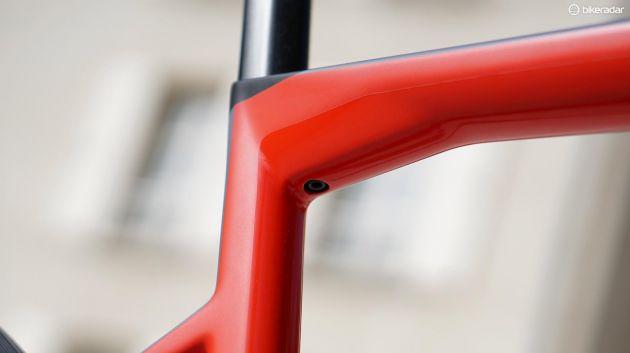
The Allen bolt for the seatpost wedge clamp is set at an angle, which is a small but appreciated touch as it makes adjustment much easier
Could I feel those changes? I don't know. Overall, I found the bike as comfortable, as easy to steer with the hips, and as eager to accelerate as before. The primary discernible difference was a slightly stiffer fork (fore and aft), due to the requirements of disc brakes.
BMC head of development Stefan Christ noted that the asymmetric, direct-mount fork was only 18g heavier than the rim-brake fork, whereas most road disc forks are at least 40g heavier than their rim cousins.
A sweet-spot chassis, relenting a bit of fork suppleness for luxury braking
For the launch, BMC hosted a few journalists in France for test rides in the Alps. After a shakedown ride, we tackled most of the queen stage of this year's Tour de France.
The Galibier was still closed for snow, but we still notched about 13,000ft vertical feet over 100 miles, taking in the Col d'Ornon, the Croix de Fer, and the Telegraphe. It was an excellent (and flat-out gorgeous) route on which to test a disc bike.
As noted above, the previous Teammachine's balanced character remains. Stand to accelerate and it blasts forward. Tip your pelvis and the bike eagerly dives. Yet when chattering over nasty potholed and patched road, the frameset acts as a calm mediator between you and the tarmac, instead of a live-wire conductor.

BMC hosted a few journalists for test rides in the French Alps
As with virtually all road frames that go from rim brake to disc, the chainstays were lengthened on the SLR01 Disc to accommodate for the extra width of the hub (135mm instead of the standard 130mm) and Shimano's recommendation for the resulting chain angles.
The 2018 SLR01 Disc's chainstays are 8mm longer than the 2017 SLR01 rim-brake bike, but because the bike's lower chassis is so stiff, I couldn't tell a difference.
I could, however, very much feel how easy the bike was to control, whether dragging my heavy carcass up the steep mountains or bombing back down them.
Linking high-speed turns in a tuck was almost effortless, thanks to the sharp front end; scrubbing off huge amounts of speed into a switchback with the index fingers was the same, thanks to Shimano's robust hydraulics.
(Interestingly, BMC made the 2018 rim-brake SLR01 with the exact same geo as the SLR01 Disc - including the 410mm chainstays - so that if and when the company's sponsored pros make the switch, the bikes will feel identical.)
On the third day of riding, most of the other editors switched to the 2018 rim-brake Teammachine SLR01, and a few noted that it felt a bit gentler through the fork.
Do you really need disc brakes on a race bike?
Excluding compatibility issues, the primary compromise for hydraulic discs is weight. Hydraulic systems add roughly a pound, and therein lies the mountain conundrum: we want supreme braking for descents but minimal weight for the uphills — even if the, uh, motor isn't exactly a feather.
BMC rider Richie Porte was training on the Col d'Izoard the day we rode up it at our journalist pace. He like many pros is not sold on disc brakes. He said he can brake just as well with rim brakes. This is a common argument among top-level pros. But, as Porte's teammate Amaël Moinard said to me, many pros have never ridden disc brakes for any real length of time.
Rim brakes, especially the latest Shimano Dura-Ace calipers, are indeed very good, but we are simply not going to argue about whether hydraulics or rim calipers are better in terms of all-around braking performance. That ship has sailed.
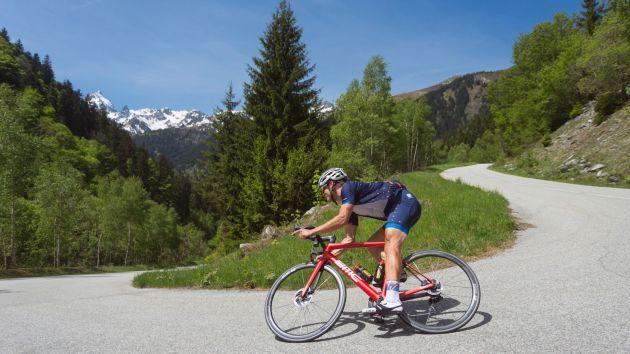
Yes, of course rim brakes work well. But hydraulics are better and just as strong with the feathering of a single finger
For professional racers, the speed and ease of wheel changes, a bike's weight and a differential in stopping distance within the peloton are real and legitimate concerns. I am not a professional racer. Are you?
I am also not an alarmist. I regularly ride carbon, rim-brake clinchers up and down mountains. Yes, I've seen — and experienced — carbon clinchers fail. I have also seen — and experienced — disc brakes fail.
The bottom line is pretty simple: hydraulics are better brakes overall than rim calipers and they are heavier and a little more complex. I love riding both kinds of bikes.
My one complaint with the Dura-Ace calipers and rotors: occasional rubbing and noise following hard braking.
For instance, after a half a dozen or so hard decelerations into downhill switchbacks, many of our rotors would be making a 'ting, ting, ting' sound as they skimmed the not-fully-retracted pads. Usually a gentle grab and release of the brake lever would eliminate this, but not always. If I had paid the full asking pricing for this bike, I would be annoyed by that sound.
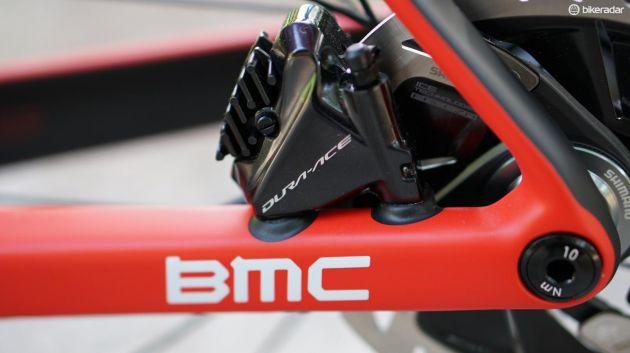
Flat mount or flush mount? BMC mounts the rear Dura-Ace caliper right into the chainstay
Smooth lines, dimensions I love and a saddle I hate
From the Roadmachine (a low BB bike I'm also fond of), BMC's product team carried over the integrated ICS cockpit, which is a smart balance of clean, integrated aesthetics and practical adjustability.
The cables and Di2 wires run straight into the frame via the head tube, but you can still adjust the stem height, as the oblong, two-piece spacers can be inserted or removed without disconnecting the hydraulic lines or shifting wires.
The end result is a front end that looks clean and works well. I would guess that the internal routing makes a small improvement in aerodynamic drag, too, though BMC hasn't yet touted it as such.
I'm a fan of the 3T Ergonova bar. The flat top distributes pressure across the palms while still being small enough to easily hold, and the internal routing makes for a uniform feel.
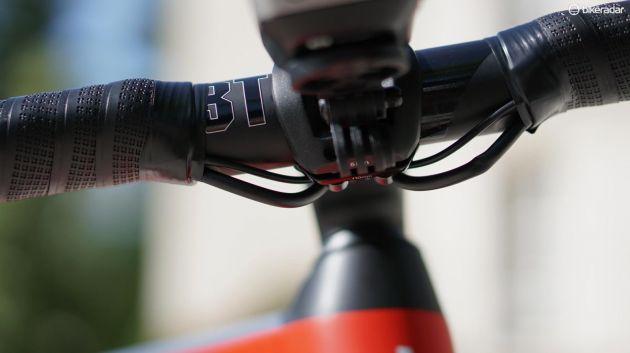
With hydrualic lines and Di2 wires running through the bar, under the stem and into the frame, this is all that you see on the front of the bike
BMC's integrated Garmin mount, which snaps into the front of the stem, now has a GoPro or light holder built into the bottom. It's very clean. I used a GoPro Hero4 Session for the ride footage shown in the embedded video.
I love BMC's choice of component dimension for the 56cm bike: a 120 stem, 42mm bars and a 172.5mm crank. Nothing earth-shaking, just a little difference than the typical build, and one that coincides with my personal setup.
In fact, the only thing I'd change — and I did change for our test rides — is the Fizik Antares saddle. That thing and I do not get along. Swap in a Specialized Power and the bike feels like home.
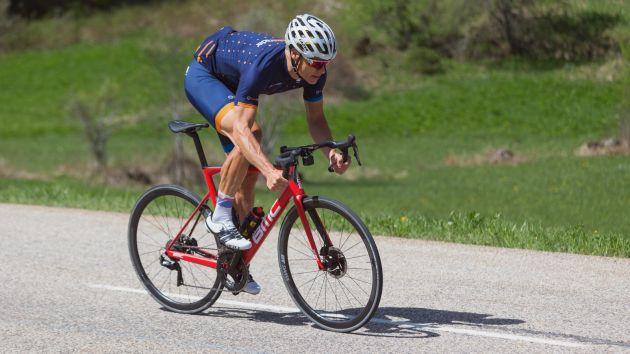
The lower chassis stiffness — from the down tube through the bottom bracket to the rear hub — is outstanding
Okay, maybe I'd change one more thing: a bit more clearance for tires. The bike comes with 25mm Vittoria Corsas, and BMC says there is room for ‘true' 28mm clinchers, although you won't have much clearance left.
Although you don't need more than 25mm for most roads rides, I'd appreciate the option to plump up on occasion.
Latest Di2 disc group plus DT Swiss carbon clinchers
How do I love Di2? Let me count the ways. Always-reliable shifting, programmable speed, programmable button functions (we had the hood buttons set up like Di2 sprint shifters or eTap — each controlling one direction at the rear), great ergonomics and remote shifting options.
The new levers are virtually indistinguishable in size from mechanical-shift Di2 levers.
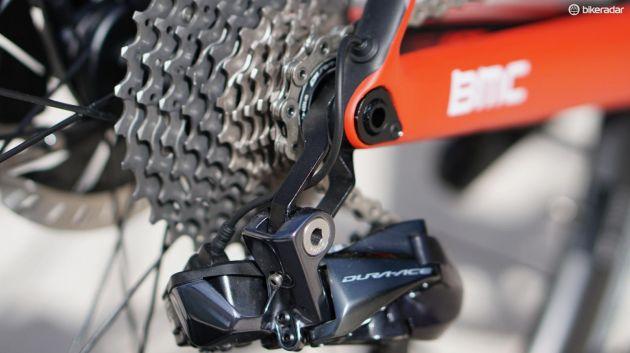
The skeleton hanger for the Di2 derailleur is an elegant touch, as is the Di2 wire routing
The brake power and modulation are superb. (Yes, yes — you can lock up your wheels with rim brakes. But that is not good modulation. That is ham-fisted power.)
When the rotors were clean, they were largely silent, with the friction rising to a gentle hum on hard stops. The only issue is the occasional, residual rotor noise after hard braking.
I love the 52/36 crank with the new 11-30 cassette. Riding up and down the big cols I used and appreciated each and every one of those gears — especially the 36-30! I just wish Shimano would get its act together and release the power meter it has been talking about since last year.
DT Swiss has new wheels divided up by endurance, aero and performance. This bike comes with top-end hoops in the last category, the PRC 1400 Spline DB 35. They are carbon, tubeless ready, two-cross, 18mm internal and 1,574g. They roll just fine. I wasn't blown away by the weight or the stiffness. They are good, just not jaw-dropping like the frameset and the Di2 group.
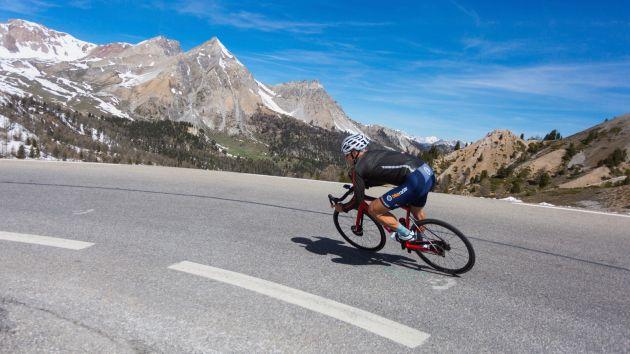
An endurance bike the Teammachine is not; the front end is low and steep
Bottom line: Stereotypical Swiss quality — and price
11,499 Euros is a whole lot of money. This isn't a great value proposition. What it is, though, is an incredible machine to ride and even just look at.
The BMC Teammachine SLR01 Disc accelerates, climbs, corners and descends like a world-class race bike. It's comfortable. Its lines are clean. And it can stop — in control — on a dime.
Bravo, BMC.
Specification
Name: Teammachine SLR01 Disc Team
Built by: BMC
Price: N/A
Available Sizes: 47cm 51cm 54cm 56cm 58cm 61cm
Brakes: (F) Direct frontal flat mount (160mm only); (R) Flatmount Standard 140mm; Shimano Dura-Ace
Cassette: Shimano Dura-Ace, 11-30
Chain: Shimano Dura-Ace
Cranks: Shimano Dura-Ace 9100
Fork: eammachine SLR, 01 Premium Carbon, Integrated Cockpit, Disc-specific
Fork Weight: 355
Frame Weight: 815
Front Derailleur: Shimano Dura-Ace 9170 Di2
Handlebar: 3T Ergonova Team
Rear Derailleur: Shimano Dura-Ace 9170 Di2
Saddle: Fizik Antares R3 Carbon
Seatpost: Teamachine SLR01 "D" Premium Carbon, 15mm offset
Shifters: Shimano Dura-Ace 9170 Di2
Stem: BMC ICS 01 - Integrated Cockpit Design, w/ computer and camera mount
Wheelset: DT Swiss PRC 1100 DICUT db 35 Carbon
Year: 2018
Chainring Size (No of Teeth): 36 52
Brake Levers: Shimano Dura-Ace 9170 Di2
Chainstays (cm): 41
Seat Tube (cm): 53.4
Standover Height (cm): 77.9
Top Tube (cm): 56
Wheelbase (cm): 99.6
Frame size tested: 56cm
Head Tube (cm): 16.8